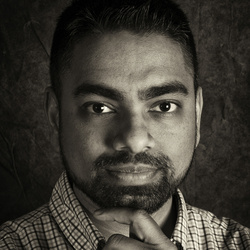Oftentimes, film photographers cite the slower, more considered pace and style of shooting film as one of the biggest reasons to shoot it. While that may be the case, it's a limitation that you can bring to the digital world with little lost in the process.
Adam Karnacz of First Man Photography explains how, in his estimation, he's able to duplicate 90% of the film photography experience with his digital camera. Instead of using a film camera to capture his images, he imposes much of the same limitations (and none of the cost) associated with that medium on his modern-day cameras.
For instance, film often had 24 or 36 exposures, and so his first order of business is to limit himself to only shooting that many photos in a day of shooting. It's an artificial limitation in digital, for sure, but as you watch him on his walk through nature, the limit that he's imposed on himself forces him to think about every shot he's taking. The end result that he shares in the video above is an absolutely incredible set of photos with a hit rate far higher than just carpet bombing a scene with hundreds or thousands of photos. If you think that you may not have the discipline to shoot this way, the other way to do it could be to throw a 2 GB SD card Canon EOS R5, and then, you'll really be limited.
The other major limit is not being able to preview your photos. Karnacz turns his digital screen at the back of the camera off, but if you're really not capable of that either, you can always gaff tape an index card or something else to block your screen and change your settings with the top LCD panel.
Of course, the main draw for any film photography is bringing prints into the physical world. Like Karnacz, I've always advocated for printing your photos, and while I'm still using my trusty Canon Pixma Pro-10, though these days, if you're looking for a similar pigment-based system, Canon is up to the Canon imagePROGRAF PRO-300 in that line.
There are some amazing photographs that Karnacz created during his "film" experiment in the video above, and he also discusses what's missing in the process. While it's cheaper to do it this way, it's not the full experience, and Karnacz explains why above.
What do you think of these "hacks" to shoot digital as if it were film? Leave your thoughts in the comments below.







Those are good ways to simulate the film experience. In addition to those I stand in a darkened room for 6 hours in front of toxic chemicals, routinely dipping my fingers in.
I did the same thing too. Spending hours sniffing the photo chemicals back in the late 1970s. But I used tongs instead of my fingers when working with the toxic chemicals.
Did Adam also stuck with one ISO, & a maximum shutter speed of 1/1000?
Yes, at the beginning, he set it for ISO 400. But he didn't say whether or not he turned off auto white balance.
When I fot my Canon 5D III, I turned off the image display. If I need to look at a photo, I'll use the image review.
Photography is full of people who delight in making life as difficult and complex as possible, this is a prime example.
I wouldn't say 'making life as difficult and complex as possible'. Cameras have so many features that can do things for you, it is actually nice just to go back to a more basic way of shooting without the camera doing almost everything for you. As a street photographer, I like to do things myself rather than rely on automated features, although auto ISO is a notable exception. I certainly don't restrict myself to 24 shots though and I do use a manual lens.
Man, one roll a day. Your brains digital storage is misfiring. Ever shot counted and it didn't matter how many rolls of film I shot in one day. Gee.